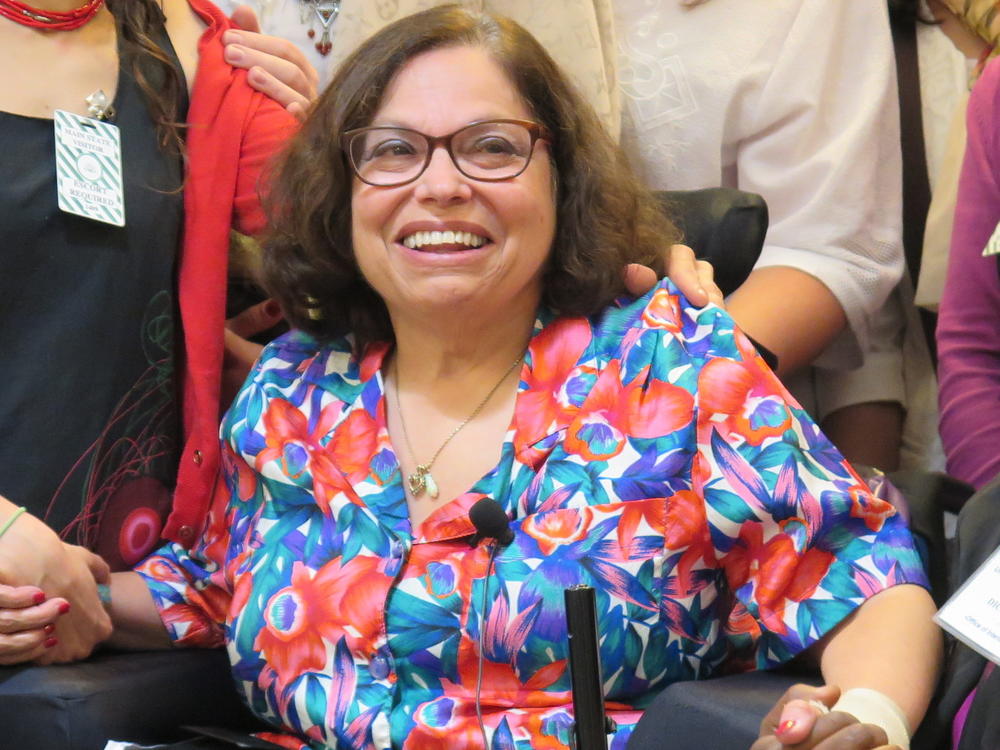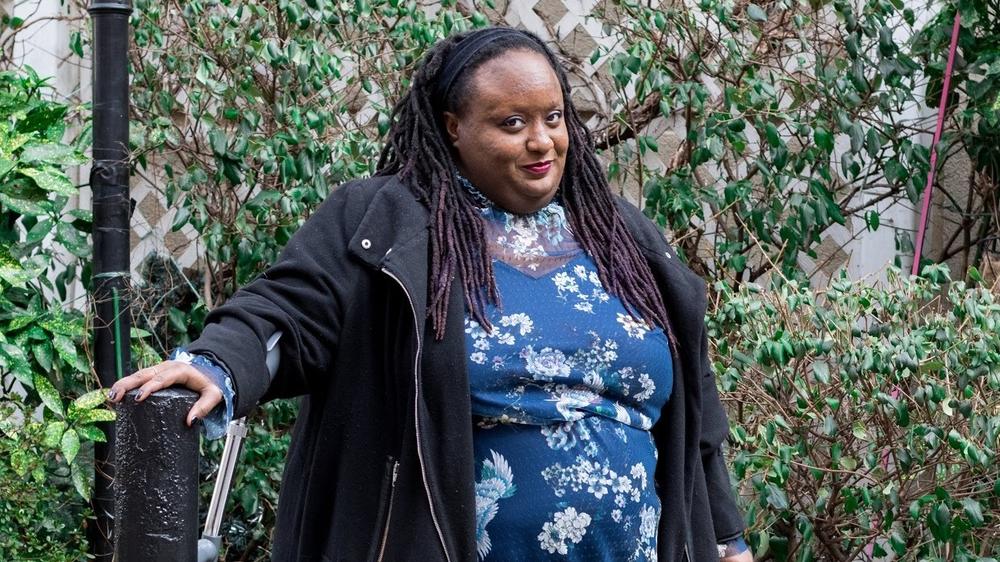Section Branding
Header Content
One Laid Groundwork For The ADA; The Other Grew Up Under Its Promises
Primary Content
Before the Americans with Disabilities Act granted people with disabilities greater protection and accessibility, a little-known law set the groundwork.
In 1977, Judy Heumann helped lead a peaceful protest that forced the government to follow through with Section 504. As part of the 1973 Rehabilitation Act, the law would force hospitals, universities and other public spaces that received federal money, to remove barriers to accessibility for all Americans. But its implementation was long delayed over the costs necessary to retrofit buildings to comply with the law.
"We were being disregarded, not having ramps, not having accessible bathrooms, not being able to get across the street, not being able to get on buses," Heumann said in an interview with NPR.
"We are not the ones that need to change"
President George H.W. Bush signed the ADA into law in 1990, expanding disability rights beyond federally funded spaces. People with disabilities could no longer be denied access to jobs, school, transportation, or to public places.
Disability was once seen as a personal health problem. But the ADA essentially argued that one's inability to walk isn't what holds them back, it's that there are stairs that block them from getting into a school, a workplace or a restaurant.
"This law not only can help disabled individuals learn about our rights, but I think also can really foster a sense of dignity and pride within disabled individuals to recognize that we are not the problem, we are not the ones that need to change," Heumann said. "It is the society around us."
As an infant in 1949, Heumann contracted polio and became paralyzed. When she was ready to enter kindergarten, her New York City school turned her away when the principal said her wheelchair would be a fire hazard. After graduating college, Heumann was denied her New York teaching license for that same reason. She sued the city's Board of Education and won the landmark case to become the city's first teacher to use a wheelchair.
Heumann was just 29 when, at a congressional hearing, she gave a moving testimony demanding action on the Section 504 civil rights law.
Her leadership in the disability civil rights movement has meant that people, like Imani Barbarin, have grown up protected by the ADA.
Barbarin, born just a just a few months before the ADA became law, was diagnosed with cerebral palsy at the age of 2.
She works for disability legal office in Philadelphia and is a prominent organizer of disabled people online, particularly of Black disabled people and other people of color.
Huemann, now 72, is thankful for Barbarin's advocacy on social media that's bringing more attention to disability rights to a new generation.
"One of the beauties of what's been happening over the last 30 years is really the expansion of the disability rights movement and the merging of voices and visions like yourself," she told Barbarin in a conversation with NPR.
Today, it's estimated 1 in 4 American adults has a disability. And it's not just visible disabilities, like using a wheelchair, being blind or deaf. There are common mental health conditions and learning disabilities. And the disabilities of old age, like Alzheimer's.
Enduring stigmas
Still, 30 years later, the disability activist says are places where ADA has fallen short.
"I think the ADA is really good at codifying and making written into law equal opportunity, but it didn't really do much to change perceptions about disability," Barbarin said.
Even with the ADA, disabled people still have a hard time breaking into the workplace. After graduate school, Barbarin sent out scores of job applications that mentioned she walked on crutches. She didn't get a single interview. When she sent out scores more, without mentioning her disability, she got interviews.
The ADA did not require every public building be made accessible — only new ones or older ones when a change is easily made or when there's a substantial renovation. Just last week, a report released by the U.S. Government Accountability Office found that most public schools have obstacles that could limit access for people with disabilities, but that updates have been delayed over budget constraints.
Recently, Barbarin noted, much of the workforce showed, albeit unwittingly, that it could adapt quickly to an environment that can accommodate people with disabilities.
"One of the things that we are witnessing as disabled people, as a disabled community, during this pandemic is how everything became accessible almost overnight," Barbarin said. "People started teleworking and going to Zoom classrooms and getting their education remotely."
NPR's Joseph Shapiro is the author of the book, No Pity: People with Disabilities Forging a New Civil Rights Movement. For a special print section on the ADA for The New York Times, he looks at the generation of young people who grew up with the protection of the civil rights law.
Copyright 2020 NPR. To see more, visit https://www.npr.org.


